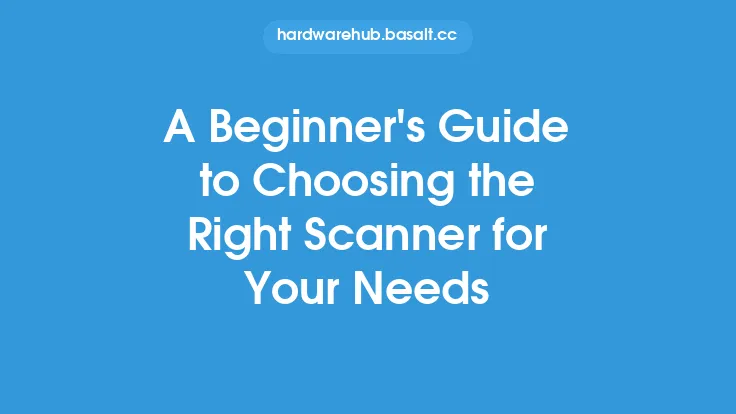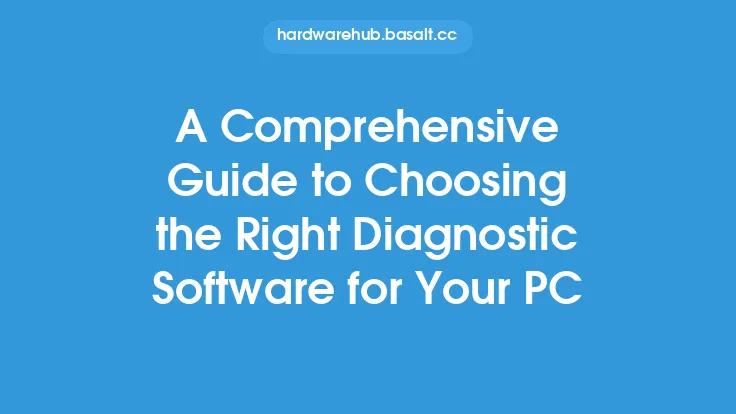When setting up a home office, one of the most essential pieces of equipment you'll need is a reliable printer. With so many options available on the market, choosing the right one can be overwhelming, especially for those who are new to the world of printing. In this article, we'll take a closer look at the key factors to consider when selecting a printer for your home office, helping you make an informed decision that meets your specific needs and budget.
Understanding Your Printing Needs
Before you start shopping for a printer, it's crucial to understand your printing needs. How often do you plan to use the printer? What type of documents will you be printing most frequently? Will you need to print photos, or will you be sticking to text-based documents? Answering these questions will help you determine the type of printer that's best suited for your home office. For example, if you'll be printing a high volume of text-based documents, a monochrome laser printer may be the most cost-effective option. On the other hand, if you'll be printing a lot of photos or color documents, an inkjet printer may be a better choice.
Printer Types: Inkjet, Laser, and More
While we won't be diving into the specifics of each printer type, it's essential to have a basic understanding of the different options available. Inkjet printers use liquid ink to produce prints, while laser printers use a laser beam to create images on a drum, which is then transferred to paper. Other types of printers, such as solid ink and dot matrix printers, are also available, but they're less common in home office settings. Each printer type has its own strengths and weaknesses, and understanding these differences will help you make a more informed decision.
Key Features to Consider
When choosing a printer for your home office, there are several key features to consider. These include:
- Print resolution: Measured in dots per inch (DPI), print resolution determines the quality of your prints. A higher DPI typically results in sharper, more detailed images.
- Print speed: Measured in pages per minute (PPM), print speed determines how quickly your printer can produce prints. Faster print speeds are ideal for high-volume printing.
- Paper capacity: If you plan to print large quantities, look for a printer with a high paper capacity to minimize the need for refills.
- Connectivity options: Consider a printer with wireless connectivity, such as Wi-Fi or Bluetooth, for easy printing from mobile devices.
- Compatibility: Ensure the printer is compatible with your computer or mobile device's operating system.
Ink and Toner Costs
One of the most significant ongoing expenses associated with owning a printer is the cost of ink or toner. When choosing a printer, consider the cost of replacement ink or toner cartridges, as well as the yield (the number of pages you can print with a single cartridge). Some printers offer more affordable ink or toner options, while others may have higher upfront costs but lower ongoing expenses. It's essential to factor these costs into your decision to ensure you're getting the best value for your money.
Space and Noise Considerations
If you have limited space in your home office, consider a compact printer that won't take up too much room. Additionally, if you plan to use your printer in a shared workspace or quiet environment, look for a model with a low noise level. Some printers are designed to be whisper-quiet, while others may be noisier during operation.
Brand and Warranty Considerations
When choosing a printer, it's essential to consider the brand and warranty offered. Look for reputable brands with a history of producing high-quality printers, and check the length and terms of the warranty. A good warranty can provide peace of mind and protect your investment in case something goes wrong with your printer.
Conclusion
Choosing the right printer for your home office can seem daunting, but by considering your printing needs, key features, and ongoing costs, you can make an informed decision that meets your specific requirements. Remember to research different printer types, consider the cost of ink or toner, and think about space and noise constraints. With the right printer, you'll be able to produce high-quality prints and stay productive in your home office. By taking the time to evaluate your options and choose the best printer for your needs, you'll be well on your way to creating a efficient and effective home office setup.





